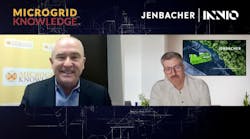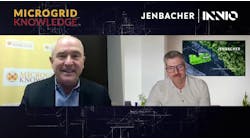In a prequel to Microgrid 2022, David Fox, vice president of sales at Siemens Grid Software US, sat down with Microgrid Knowledge to discuss how sectionalizing will be a key component of the future grid.
We often think the grid is one big entity, but, in fact, utilities can turn parts off and on, allowing them to create an infinite number of microgrids. Today, the concept of sectionalizing is used by utilities to provide resiliency, but it’s limited, says David Fox, vice president of sales at Siemens Grid Software US, in this video interview with Elisa Wood, editor-in-chief of Microgrid Knowledge.
Essentially, if there’s an issue in one section of the grid, utilities transfer the customers to another section of the network to keep the power flowing, according to Fox.
“What we are envisioning is that ability would be expanded greatly. And it won’t be just to serve other customers from other sections of the grid, but it’ll be expanded in case of widespread outages to carve out different microgrids based on the availability of the resources in that area,” he says.
Fox explains that during extreme weather events such as the recent wildfires in California and the winter storm that devastated Texas, a sectionalized grid can keep the power on, even for customers in affected areas. “There were certain parts of Texas that were more impacted than others. And so if you have this sectionalized microgrid, you can now support the areas where that local grid is down and offline.”
More than just keeping the power on, a sectionalized grid can also help fend off cyberattacks. Sectionalizing allows utilities to address cyberattacks just like they would a wildfire or extreme weather event. “The area that’s being attacked, take that offline. And yet, everyone has access to energy” because it’s coming from other areas that aren’t under attack. Fox says, “If you could sectionalize, you’re going to mitigate risk of [cyberattacks] happening.”
Join us in Philadelphia, Pennsylvania, June 1-2, for Microgrid 2022: Microgrids as Climate Heroes, where Shashank Pande of Siemens Grid Software will talk about sectionalization during a panel discussion about the future grid.







